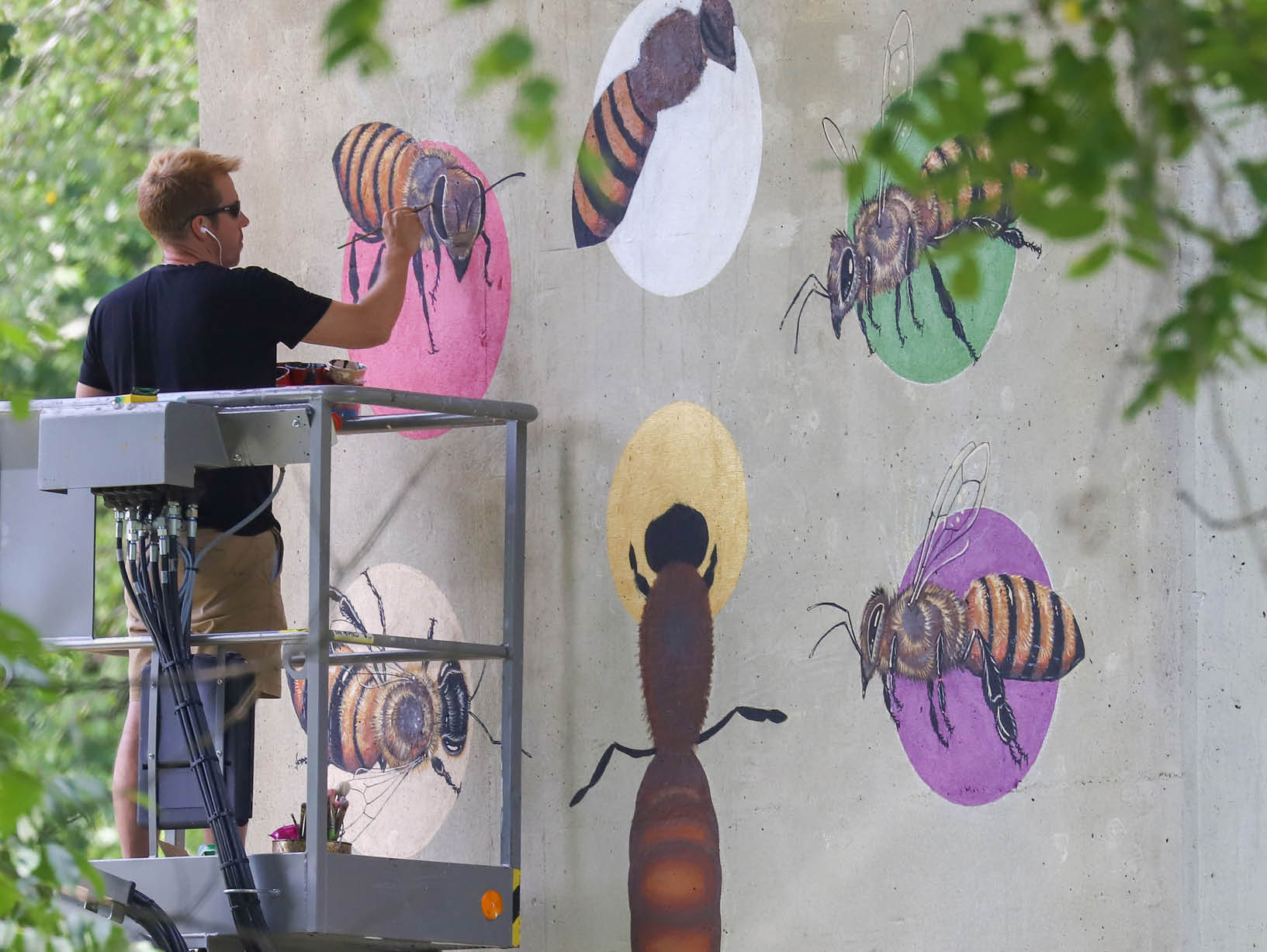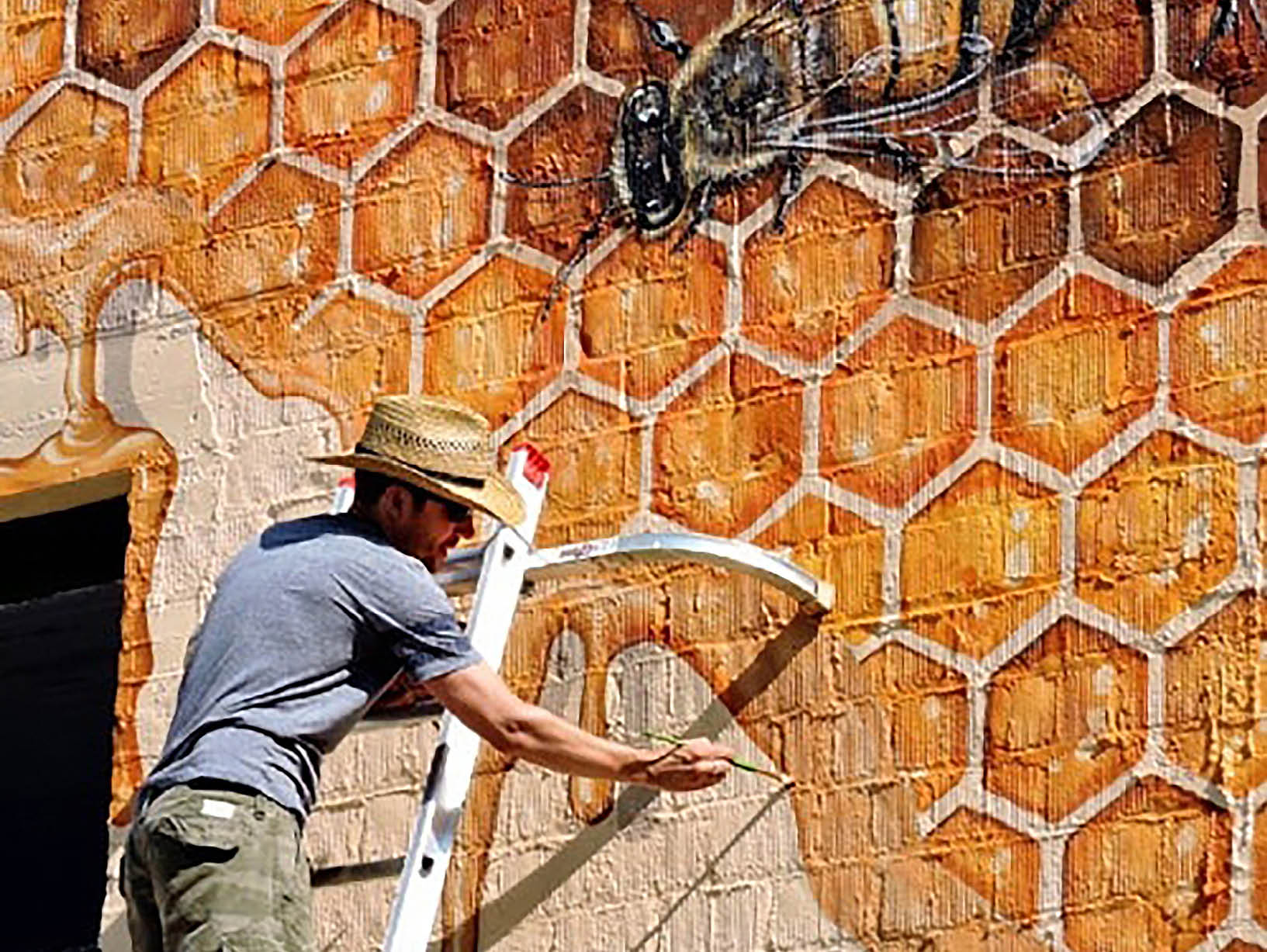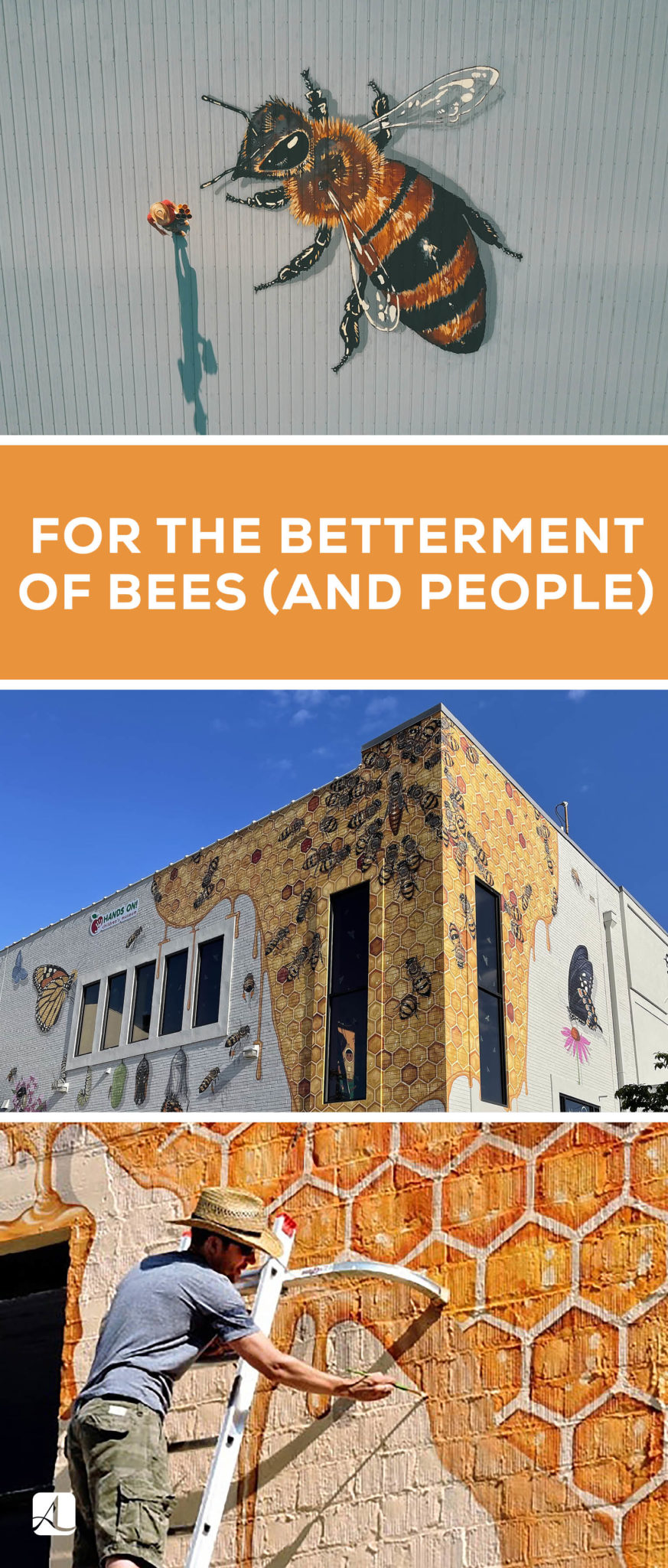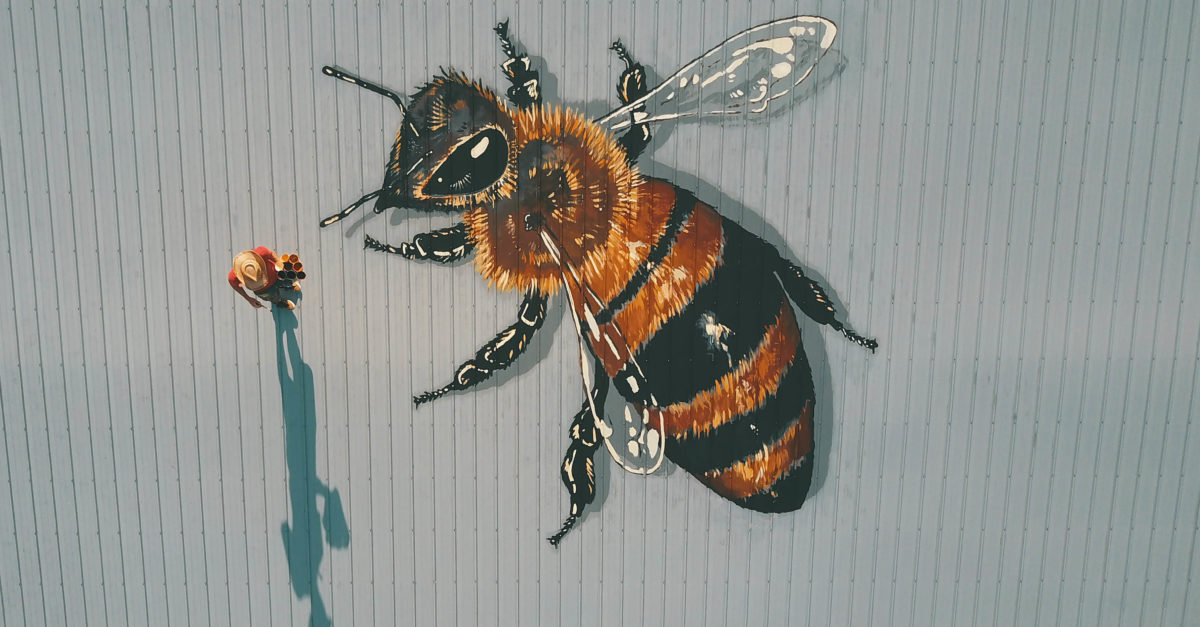For the Betterment of Bees (and People)
Interview with Matt Willey
Photographs Courtesy of The Good of the Hive
Inspired by a chance encounter, artist Matt Willey decided to raise awareness of bees and improve human interaction. He now travels the globe painting bee murals, a project he’s dubbed The Good of the Hive.

Did you always want to be an artist?
Yes. My mom was a painter and an interior decorator, and she recognized early on that I had an aptitude for art. I did two years of college at Alfred University in western New York, an amazing art school, and then transferred to the Museum of Fine Arts in Boston and Tufts University.
What did you do after school?
I moved to Washington, DC, and waited tables. One night, I experienced a panic attack about my art dreams slipping away, so I quit and put up flyers for painting work. Within a week, somebody called me about a decorative painting job. That was my first project, and it turned into twenty-five years of a mural business that is continuing today.
What inspired The Good of the Hive?
I’m naturally observant and curious. One day, this dying bee flew in my window and landed on my rug. I was surprised by how beautiful this little creature was. After she died, I started researching honeybees and came across a behavior called “altruistic suicide,” where a sick bee will voluntarily leave for the good of the hive.
It fascinated me that bees take this drastic action because they’re hardwired to understand that their immune system is collective. Their health is not based on each individual bee but on the health of the hive. It made me realize that ours is too. After that experience, I felt so much more connected to other people. It was a paradigm shift for me.
How did the bee murals begin?
I’d moved to Asheville, North Carolina, and was still doing regular mural projects until 2014, but I had been telling people I wanted to do just one mural to raise awareness of bees. A friend of mine showed me an exterior wall of a honey company in Florida, and so I called the family and pitched my idea. They said they would love for me to do it, but they didn’t have any money to pay me, the town had no money to pay me, and murals were illegal in their town. I told them that if they could get the law changed, they wouldn’t need to worry about paying me. I hung up the phone thinking I would never hear from them again.
Two months later, they called and said they got the law changed. I called that project The Good of the Hive, created a website for it, and raised around $500 for gas money. When I started the job, though, I noticed that people were sharing stories about it; one even hit Facebook. Donations started coming in, and I ended up getting the mural fully funded. It was amazing to see everyone come together for the bees.

Is the hive mentality a metaphor you’ve continued with?
The definition of The Good of the Hive and what a hive means to me began to form at that time, based mostly on human interactions. For example, so much debate happens in the world today. However, when I was painting that project, I’d see two very different people, like an eighteen-year-old girl and an eighty-year-old farmer, talking while looking in the same direction at the bees. Their body language was the opposite of defensive.
At that first mural, a man asked me how many bees were in a healthy hive. I had just learned from the company’s beekeepers that there are 30,000 to 60,000. He asked if I could paint 50,000 of them, so I decided to make that my goal. There were sixteen in that first mural, and that was almost 8,000 bees and thirty-four projects ago.
What started out as raising awareness of the importance of bees has evolved to include pollination and food systems.
Bees are also the symbol I use for defining the hive as us. Every living creature on earth is part of one hive. I want to help integrate that into our consciousness, and bees are a tenacious symbol of perseverance and a higher sense of purpose—of always working for the greater hive.
How far has your work taken you?
I just follow where the project goes. I’ve gone from New York to San Diego. I did a mural at the Smithsonian’s National Zoo. I’ve painted international murals, spoken at MIT and the United
Nations, and given a TED Talk. Recently, people have reached out from Peru, Belgium, South Africa, and India, and I discovered that around seventy-five schools in India had put The Good of the Hive on their curriculum. It’s been wild.
Do you interact with people at your job sites?
Yes, possibly to my detriment. From day one, I knew my job was to paint bees and talk to people about bees. But there are times when it gets overwhelming. The collaboration is great, though. I did a project at Burt’s Bees where every employee painted a petal of a flower, so they got to feel connected to the project and each other. Those are magical moments for me.
How do your projects come about? How long do they take?
Every single mural I’ve made has happened because somebody reached out to me. I call them my champions because it’s not always easy to spearhead such a project. On average, each project takes a minimum of four to six weeks for me to paint it, and murals can take years to come to fruition from our first discussions.

Who decides what is going to be painted?
There are different processes and stories for each one, whether it’s on the side of the Burt’s Bees global headquarters, a building in a historic district where murals normally aren’t allowed, or an elementary school building. It’s always my goal to remain open to ideas.
I also like to keep it interesting because this project is a marathon, and I don’t want to be painting the same thing all the time. Burt’s Bees was about the swarm. The zoo was about the
swarm as well but from a very different perspective. I painted giant bees on a barn roof in a tiny organic farm in Nebraska, so the nearby crop dusters would be reminded of the harm they were doing to the bees and his crops whenever they flew by.
What lessons have you learned on this journey?
I’ve learned a lot, but primarily that balance is invaluable. How do we create balance with the ecosystems that sustain us? Another is how we speak to each other, especially the way the world is today. People need to listen more and adapt how they say something to their audience. Cognitive dissonance is a real problem. It doesn’t mean we change the facts. It means that people have different ways of hearing. Facts are fine for some, but they scare others into not listening. So maybe they need it to be told as a story.
I also realized we’re hardwired to go and get whatever we want. That’s not balance. Balance is when you say, “What do I need, what is enough, and what happens when I exceed enough?” I hope that’s something we can learn from the pandemic. Painting for weeks at a time has allowed me to slow down, take stock of things, and talk to people.
What challenges did you face during your Good of the Hive project?
I love that word because I do see things as challenges instead of struggles. But I’ve had my share over the years. The first was “Is anybody going to pay me to do this?” [Laughs] Plus, my work doesn’t allow for mistakes. I’ve worked at schools where the screaming was deafening, kickballs were hitting me in the head, and kids were climbing the scaffolding. I sometimes paint in 100-degree weather and windy conditions.
But more often than not, I’m standing there up on scaffolding, listening to music, painting bees for a living, and wondering how I ever got this lucky.
For more info, visit thegoodofthehive.com






















